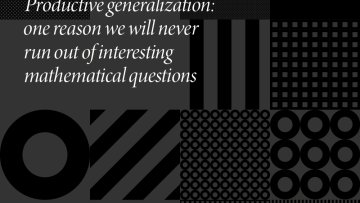16:00
On the negative Pell equation
Abstract
Stevenhagen conjectured that the density of d such that the negative Pell equation x^2-dy^2=-1 is solvable over the integers is 58.1% (to the nearest tenth of a percent), in the set of positive squarefree integers having no prime factors congruent to 3 modulo 4. In joint work with Peter Koymans, Djordjo Milovic, and Carlo Pagano, we use a recent breakthrough of Smith to prove that the infimum of this density is at least 53.8%, improving previous results of Fouvry and Klüners, by studying the distribution of the 8-rank of narrow class groups of quadratic number fields.


